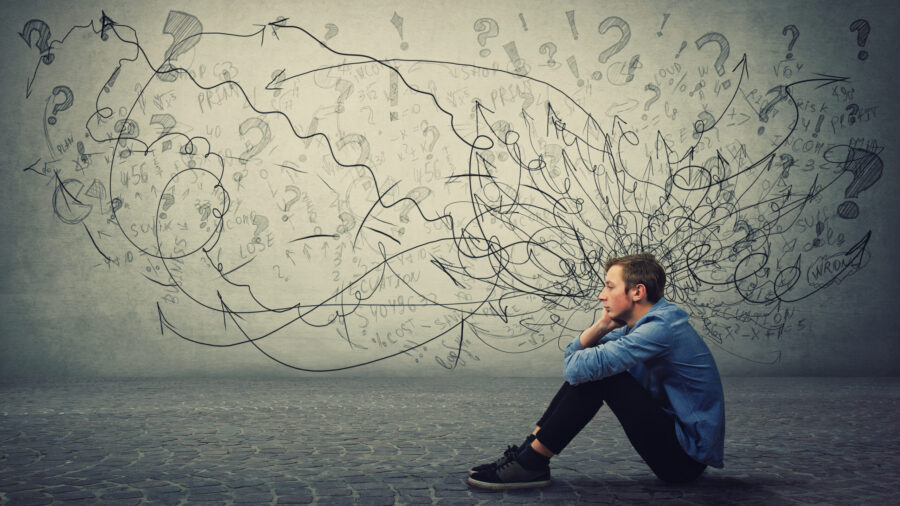In recent years, there has been a growing acknowledgment of mental health issues, with anxiety being one of the most prevalent. It seems as though anxiety has become an intrinsic part of modern life for many people. But what exactly does it mean to “normalize” anxiety? And what impact does this normalization have on individuals and society as a whole?
In this article, we delve into the prevalence of anxiety, explore the factors contributing to its normalization, and discuss the potential consequences of this normalization.
Understanding Anxiety
Anxiety is a natural human response to stress or perceived threats. It is a complex combination of emotional, cognitive, and physiological reactions that prepare us to confront or avoid danger. While experiencing occasional anxiety is normal, persistent or excessive anxiety can become problematic and interfere with daily functioning.
Prevalence of Anxiety
Anxiety disorders are among the most common mental health disorders worldwide. They affect people of all ages, backgrounds, and socioeconomic statuses. According to the World Health Organization (WHO), approximately 264 million people suffer from anxiety disorders globally, making it one of the leading causes of disability.
Factors Contributing to Normalization
The normalization of anxiety can be attributed to several interconnected factors:
- Social Media and Digital Connectivity: The rise of social media and constant digital connectivity has created a culture of comparison and perfectionism. People often showcase curated versions of their lives online, making others feel inadequate or anxious about their own lives.
- Societal Pressures: Modern society pressures individuals to excel in various aspects of life, including education, career, relationships, and appearance. These unrealistic expectations can fuel feelings of inadequacy and anxiety.
- Stigma Reduction Efforts: Efforts to reduce the stigma surrounding mental health have led to increased awareness and discussion of anxiety disorders. While this is undoubtedly a positive development, it has also contributed to the normalization of anxiety, with more people openly acknowledging their struggles.
- Economic Insecurity: Economic uncertainty, job instability, and financial stressors can exacerbate anxiety symptoms. In today’s volatile economy, many individuals constantly worry about their financial future, adding to their overall anxiety levels.
Impact of Normalized Anxiety
The normalization of anxiety has profound implications for individuals and society as a whole:
- Impaired Quality of Life: Chronic anxiety can significantly diminish one’s quality of life. It can affect relationships, work performance, physical health, and overall well-being. People may find it challenging to enjoy simple pleasures or engage in activities they once found fulfilling.
- Healthcare Burden: The widespread prevalence of anxiety places a burden on healthcare systems, with increased demands for mental health services, therapy, and medication. This strain can lead to long waiting lists, limited access to treatment, and inadequate support for those in need.
- Productivity Loss: Anxiety-related absenteeism and presenteeism in the workplace result in decreased productivity and economic losses for businesses. Employees struggling with anxiety may have difficulty concentrating, making decisions, and meeting deadlines, leading to suboptimal performance.
- Interpersonal Relationships: Anxiety can strain interpersonal relationships, causing misunderstandings, conflicts, and social withdrawal. Friends, family members, and romantic partners may struggle to understand and support individuals experiencing anxiety, further exacerbating their feelings of isolation and distress.
Addressing Normalized Anxiety
While normalizing anxiety has its drawbacks, it also presents an opportunity to destigmatize mental health issues and promote greater understanding and empathy. Here are some strategies for addressing normalized anxiety:
- Education and Awareness: Promote education and awareness campaigns to increase understanding of anxiety disorders, their symptoms, and available treatment options. Encourage open dialogue about mental health in schools, workplaces, and communities.
- Supportive Environments: Create supportive environments that foster open communication, empathy, and acceptance of individuals struggling with anxiety. Implement workplace wellness programs, peer support groups, and mental health resources to provide employees with the needed support.
- Stress Management Techniques: Teach stress management techniques such as mindfulness, relaxation exercises, and cognitive-behavioral strategies to help individuals cope with anxiety more effectively. Encourage regular physical activity, adequate sleep, and healthy lifestyle habits to promote overall well-being.
- Accessible Treatment Options: Improve access to affordable and evidence-based mental health services, including therapy, counseling, and psychiatric care. Invest in community mental health programs, teletherapy platforms, and online resources to reach underserved populations.
Normalizing anxiety involves recognizing its prevalence and impact on individuals and society while striving to address the underlying factors contributing to its normalization. By promoting education, awareness, and supportive environments, we can reduce the stigma surrounding anxiety disorders and ensure that individuals receive the care and support they need to thrive. It’s time to normalize conversations about mental health and work together to create a more compassionate and understanding society.

